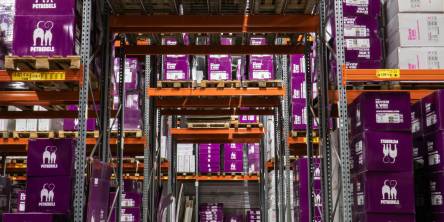Understand the Effective Benefits of Data Pipelines

Organizations today deal with massive amounts of data. To make informed decisions based on such data, it is necessary to analyze the data in a way that gives insights that can be acted upon. Data flow itself can be unreliable and there are many points during their transfer from one system to another where data can be prone to corruption. Data's increasing diversity and complexity leads to fragmentation and data silos, making it difficult to fetch simple business insights.
Processing big data effectively and efficiently requires data-driven strategies. The variety and velocity of this big data can be overwhelming, and a robust mechanism is needed to merge these data streams. This is where data pipelines come into the picture.
With this blog, I’ll highlight the essential benefits of data pipelines.
What Is A Data Pipeline?
Data can be sourced from databases, files, APIs, SQL, etc. However, such data is often unstructured and not ready for immediate use. A data pipeline is a technique or method of collecting raw, unstructured data from multiple sources and then transferring it to data stores or depositories such as data lakes or data warehouses. But before this data is transferred to a data depository, it usually has to undergo some form of data processing. Data pipelines consist of various interrelated steps that enable data movement from its origin to the destination for storage and analysis. An efficient data pipeline facilitates the management of volume, variety and velocity of data in these applications.
Benefits Of Data Pipelines
- Centralization of data: A data pipeline helps create centralized databases by collecting and storing data in a single location that provides access to all users from multiple locations. Data centralization enables cross-functional collaboration and supports data transparency across business. This helps users from different departments access the data using a single management system. Centralization of data also helps disable data duplication and data silos while enhancing data consistency.
- Data standardization: Unstructured data has to be transformed into a common and uniform format to generate insights by data analytics. This is possible using data standardization. It ensures that the data submitted for processing is durable, consistent and secure by providing a catalog of how it has been processed. The steps for data standardization are, setting data standards, identifying the data sets that need to be standardized, determining the data sources, identifying potential issues related to these sources and finally, formatting and verifying the standardized data.
- Flexibility and agility: Data pipelines can adapt quickly and efficiently to changing data needs and demands. Flexible and agile data pipelines can easily handle data inputs from various sources in multiple formats and volumes. They can scale the resources up or down according to the workload and demand. Flexible and agile data pipelines can provide faster and more accurate insights, enabling better decision-making and business outcomes. They can help reduce the cost and complexity of data management and improve the reliability and quality of data by avoiding data silos, latency and corruption issues. Flexible and agile data pipelines can support innovation and growth by allowing data teams to experiment with new data sources, methods and technologies.
- Improving data quality: Data pipelines can improve data quality as it moves from one location to another by applying consistent metrics and transforming the data to ensure that it is reliable and trustworthy. It helps reduce human error by automating data validation, cleansing, and enriching the data to ensure its meaningfulness and correctness. Using cloud-based solutions helps avoid data silos, latency and corruption issues common to traditional data pipelines.
- Iteration refers to repeating a series of steps or actions to realize a desired outcome or meet a desired condition. Iteration in data pipelines helps improve efficiency, quality and reliability of data processing and analysis. Iteration involves testing and validating data sources and formats to ensure that they meet the expectations or the desired outcome. The iterative approach increases efficiency by reducing the time and effort needed to collect, transform and analyze data. It improves the data quality by ensuring consistency, accuracy, and relevance.
Conclusion
A data pipeline is a set of processes designed to define what data to collect, from where and how, and to extract, transform, combine, validate and load this data for analysis and visualization. Data pipelines can benefit organizations that must manage and analyze large, complex data sets. They offer potent solutions for data management to help businesses achieve effective decision-making and business outcomes.
There are many unique ways to go about it, and tying up with a full-service data analytics company for data pipeline automation to save valuable time, effort and money to develop a low-code platform that can handle simple replication tasks and complex data transformations.
Similar Articles
For modern businesses to thrive, ensuring the effective management of inventory stands has become vitally important. Inventory management stands as a cornerstone of success. And the emergence of the Internet of Things (IoT) has introduced a new era of connectivity and efficiency across diverse industries.
Do you know what the following e-commerce companies have in common: Amazon, Walmart, eBay, and more? All of these e-commerce companies' apps make use of Java. Java is decidedly among the leading choices of programming language for e-commerce applications because it offers a world of benefits; for example, since Java code can be run on any platform with a Java Virtual Machine (JVM), users of e-commerce apps made with Java can access the said apps on a variety of devices.
Nikola Tesla in 1926, once described what is now called a mobile phone as a telephone that can fit into one's “vest pocket.” As otherworldly as that idea was then, nearly a century later, the reality is even more astounding.
Given the staggeringly high amounts of data being generated worldwide every single day, it ought to come as no surprise that organizations often struggle to pick the right tools to help them effectively harness the potential of all their data.
Managing properties can be a difficult task with the right tools. Property owners must find and use the best property management software. It can be a long and tedious process as there are many options in the property management software market.
In the ever-evolving financial services landscape, industry challenges are numerous and complex. From stringent regulations to rapidly advancing technology and changing consumer expectations, financial institutions face many obstacles.
The human learning capability is a great resource for helping technology evolve and grow, breaking boundaries, and creating new ones. Emulating the ability of humans to learn at a gradual but retentive pace, Machine Learning is the latest power monster that is redefining human-machine interaction.
In the ever-evolving landscape of low-code development, Microsoft's Power Platform stands out as a powerful tool for building custom applications. In today's dynamic digital landscape, creating and managing web pages is no longer the exclusive realm of professional web developers
In the data-driven business world, where information is of utmost priority, organizations are increasingly turning to data warehousing and data marts to harness the power of their data. These data management solutions are pivotal in transforming raw data into actionable insights.









